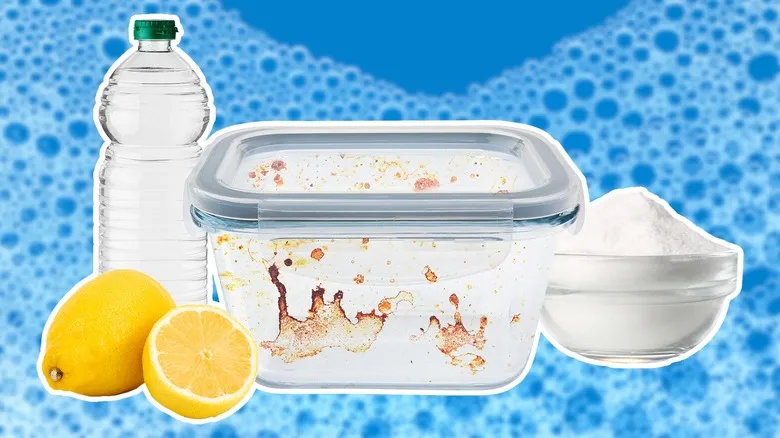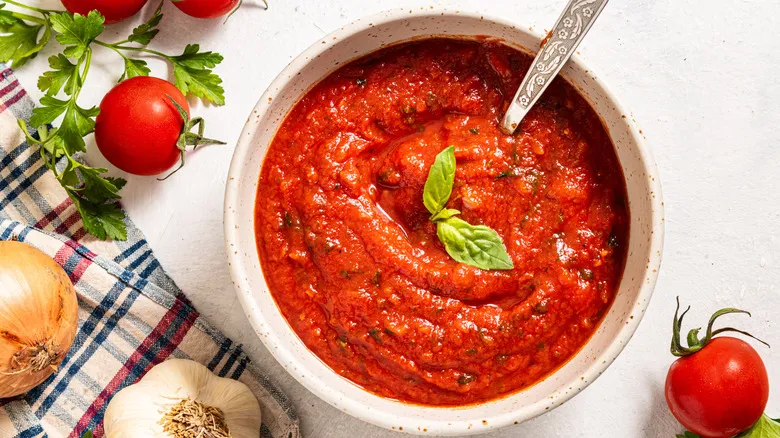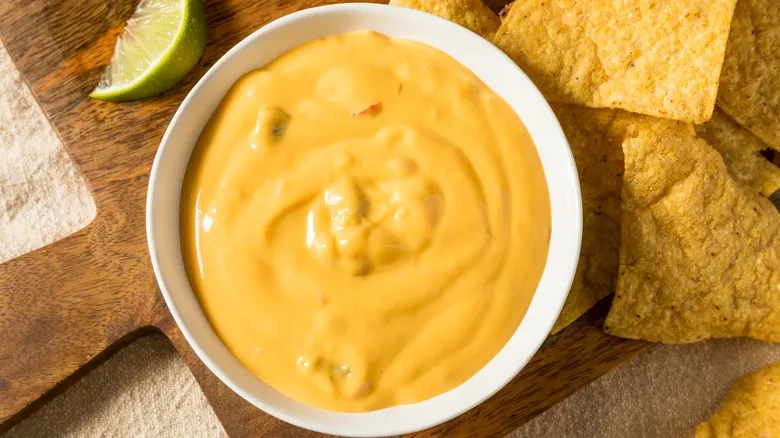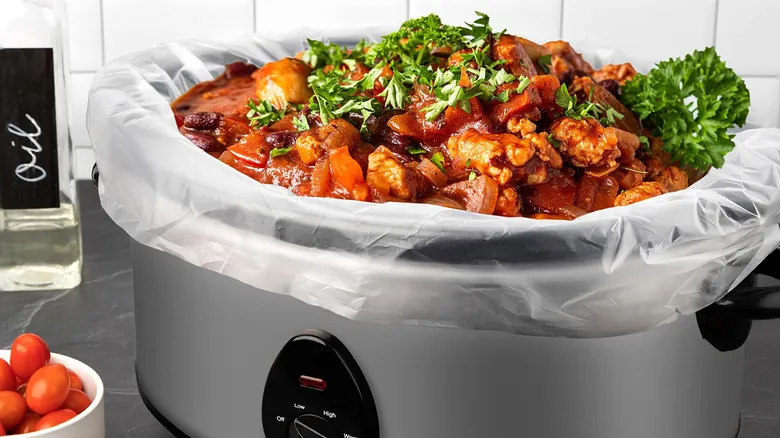Dish soap
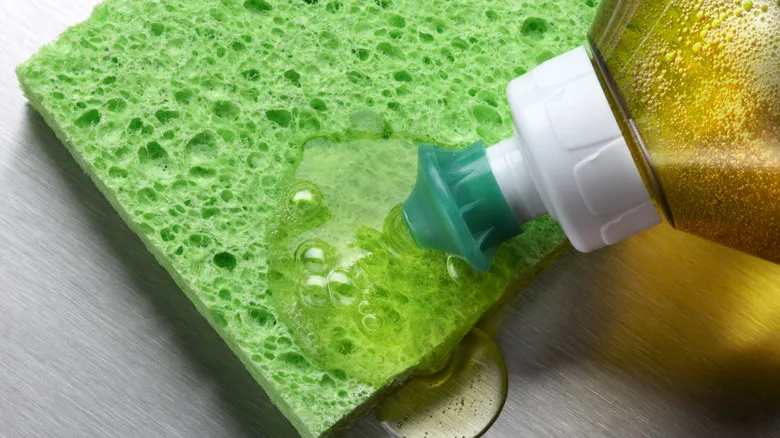
A great starting point for cleaning stained containers is to use classic dish soap, water, and a bit of effort. The molecules in dish soap have one end that attracts water and another that clings to grease and oil. This allows the soap to form a connection between the clean water from your faucet and the greasy food residues on your dishes, enabling them to be rinsed away. Adding some friction helps the soap penetrate the porous surfaces of the containers, effectively lifting away stains.
If you'd prefer not to stand at the sink scrubbing with a brush or sponge, you can try this popular TikTok cleaning hack for stained containers. Simply fill your container with warm water, dish soap, and torn pieces of a paper towel. Seal the container with its lid and shake it vigorously for about a minute until you notice the stains starting to lift. The friction from the shaking, combined with the soap, works to eliminate the stains. Plus, you'll get a little arm workout while making your plastic container sparkle!
White vinegar
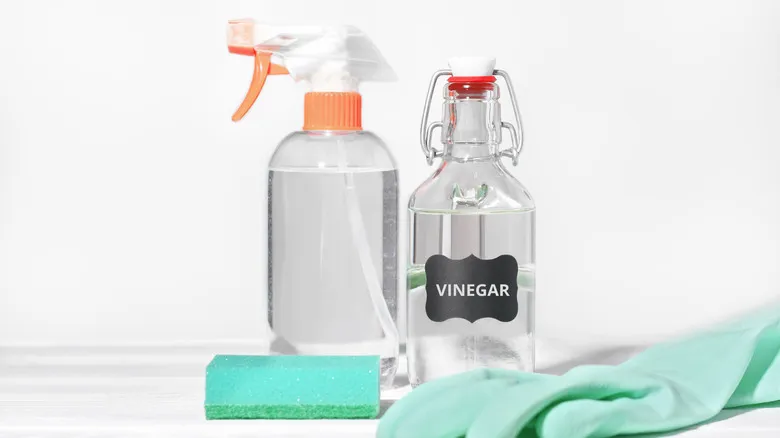
Utilizing an acidic cleaning solution such as white vinegar aids in breaking down the molecular bonds of stains, making them easier to rinse away with water. Specifically, acetic acid is the organic compound found in white vinegar that imparts a strong, sharp flavor and also serves as an effective cleaning agent for various household items, including your espresso machine. It's important to remember that while vinegar is commonly used in cooking and may not be perceived as hazardous, it is still an acid, so it’s advisable to dilute it with water for cleaning purposes.
Nigel Bearman, director of Daily Poppins, suggests a particular method for stain removal using white vinegar. Begin by mixing a cup of hot water with one tablespoon of vinegar in your container. If you're dealing with a larger container, feel free to double or triple the amounts, according to Bearman. Let it soak for an hour or overnight, then wash it with dish soap to eliminate any lingering vinegar smell or taste.
Baking soda
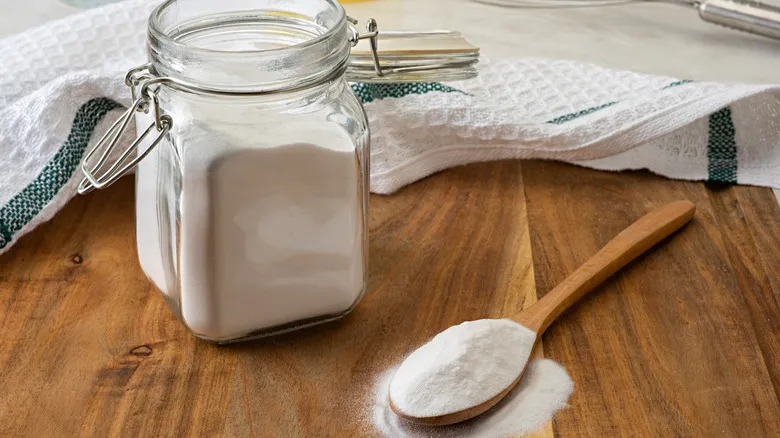
Baking soda is a versatile cleaning agent for your kitchen. It can tackle a variety of tasks, from sanitizing cutting boards to cleaning your oven. Its effectiveness as a cleaner comes from its mild abrasive properties. When you pair the scrubbing action with baking soda, you can effectively eliminate stubborn stains. Additionally, it serves as a deodorizer. However, be cautious not to mix this method with vinegar, as they neutralize each other and diminish their cleaning power.
If you want to try the baking soda technique, cleaning expert Ashley Kider, the chief operating officer at Dashing Maids, suggests creating a thick paste with baking soda and water, aiming for a consistency similar to runny toothpaste. Apply the paste to the stain and allow it to sit for at least 30 minutes, or even overnight. Afterward, rinse off the paste and wash the area with soap and water to eliminate any residue, leaving you with a stain-free surface.
Hand sanitizer
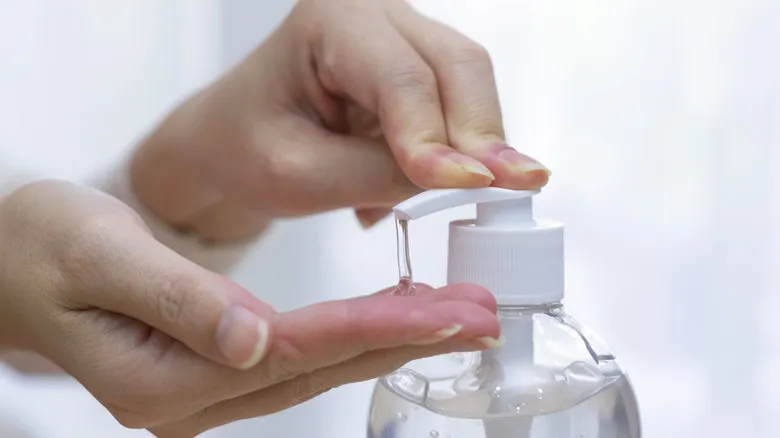
Using hand sanitizer on your dishes might not have been something you considered before, but it could help eliminate stubborn stains in your plastic food containers. The alcohol in hand sanitizer effectively removes bacteria and viruses by penetrating their outer protective layers and destroying them. Although the stains on your containers aren't the same as harmful germs, the alcohol can break down the molecules in the stains, making them easier to rinse away.
If you choose to use hand sanitizer for tackling stains in your food containers, be aware that it may require a significant amount of sanitizer. It's advisable to select a product that is free from added colors and fragrances, as these could leave an unpleasant smell in the container. Pour enough hand sanitizer into the container to fully cover the stain and let it sit for about an hour. Afterward, wipe the container clean with a paper towel. "As you wipe away the hand sanitizer, the stain will lift. When you wash the container with soap and water, any remaining traces of the stain (and sanitizer) will also be removed," explains Bearman.
Sunlight

You might have heard that sunlight can effectively remove stains from clothing, so why not experiment with it on your stained plastic storage containers? There are a few reasons why sunlight works well for this purpose. Firstly, sunlight can lighten stains by bleaching them, making them less visible. In particular, the carotenoids responsible for red and orange stains on containers are highly sensitive to sunlight. Secondly, the UV rays from the sun help to break down the molecular bonds in the stains, allowing them to be washed away more easily.
If you live in a sunny area and want to try this method, start by hand washing your container with soap and water to eliminate as much food residue or sauce as possible. Then, place the container on a counter near a window that receives direct sunlight for a few hours (the longer, the better). You should see a noticeable improvement in the stains.
Lemon
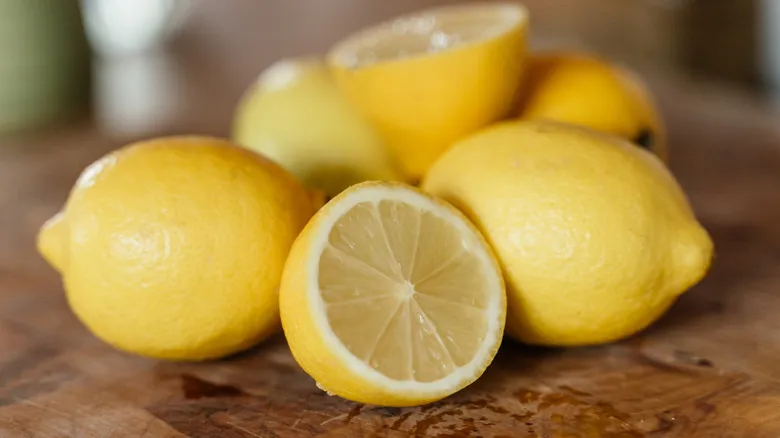
Similar to vinegar, lemon possesses a mild acidity, which makes it an effective stain remover and a versatile cleaning agent for various household tasks, such as oven cleaning. Acids help lift stains by imparting a charge to the stain molecules, making them more attracted to water. (As previously noted, stains caused by lycopene are hydrophobic, so using lemon or vinegar essentially helps to counteract this.) Once the stain molecules are charged, they become significantly easier to wash away with water.
Additionally, lemon acts as a natural degreaser, effectively tackling any stains that may be present due to oils stained orange-red from carotenoids on the container's surfaces. Lemon juice also serves as a mild bleaching agent, which can help lighten those stubborn stains.
If you have stained containers and a few extra lemons on hand, give this method a try. Begin by cutting a fresh lemon in half and then rub the cut side directly onto the stains. After that, squeeze some juice from the lemon and use a brush or sponge to work the juice into the stains until they start to fade, then wash as you normally would with dish soap.
Be preemptive with stains
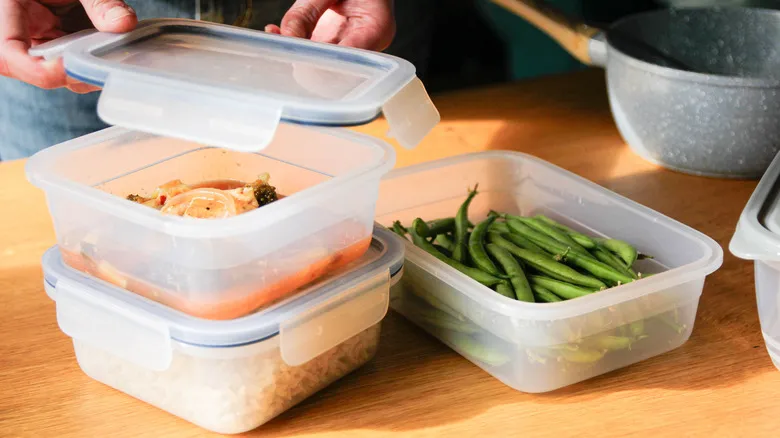
Taking a few precautions to prevent stains on your containers is definitely worthwhile. Lisa Yakas, a senior account manager for product certification at the National Sanitation Foundation (NSF), recommends starting with high-quality materials for your containers. "Certain food containers are certified to NSF Protocol P386: Food Storage Containers for Home Use," she explains, "which guarantees they are easy to clean and made from safe materials for home use." Following the manufacturer's instructions for usage and cleaning will also help extend the life of your containers.
It's important to remember that heat can lead to stains. "When storing hot foods, let them cool down a bit before placing them in containers," advises Yakas. To prevent bacterial growth that could lead to foodborne illnesses, adhere to the two-hour rule. She also suggests avoiding reheating food in plastic containers; instead, transfer your food to a microwave-safe bowl or plate. While this may mean more dishes to wash, it will help keep your plastic containers looking new for a longer time. Additionally, heating certain plastics can cause chemicals to leach into your food, so it's best to avoid microwaving them.
Another tip from Yakas for preventing stains is to apply a light coat of cooking oil to your containers before adding stain-prone leftovers like tomato soup or curry. The oil acts as a barrier between the carotenoids and the plastic surface. After you've finished with the food, be sure to give your containers a quick rinse immediately. If you're tired of dealing with stains altogether, consider switching to glass containers.
Release your toughest stains to the bin
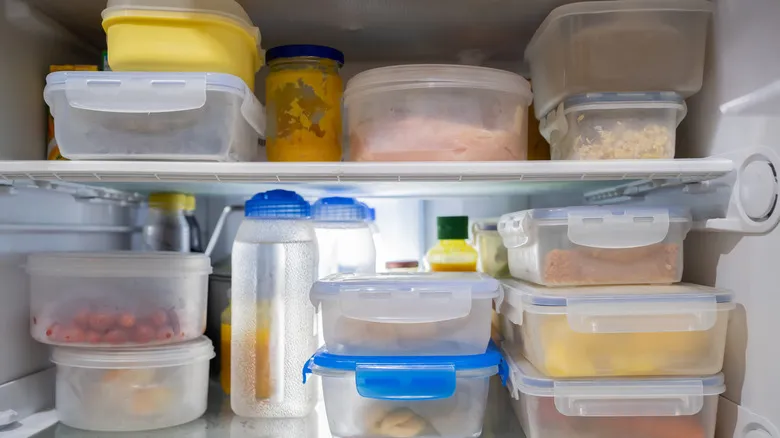
The positive aspect is that many stained containers can still be utilized, but it's crucial to recognize when it might be time to purchase new ones. Not all plastic storage containers are safe for the dishwasher, so be sure to verify before placing them in. While it may be inconvenient to wash your plastic containers by hand, doing so can help prevent many stains, especially since the high temperatures in the dishwasher can often exacerbate them.
If you've attempted various stain removal techniques and your container remains discolored, it might be time to part ways with it. Lisa Yakas advises, "If a container has a stubborn stain, it's best to dispose of it, as deep stains and scratches can harbor bacteria and retain odors. Staining may also suggest that the plastic has absorbed food particles, increasing the risk of chemical leaching, particularly when reheating food in the container."
On the topic of discarding storage containers—if you've been saving take-out containers to add to your leftover storage, it's likely time to get rid of them. Take-out containers are not intended for multiple uses and may not be safe for storing or reheating food.
Recommended
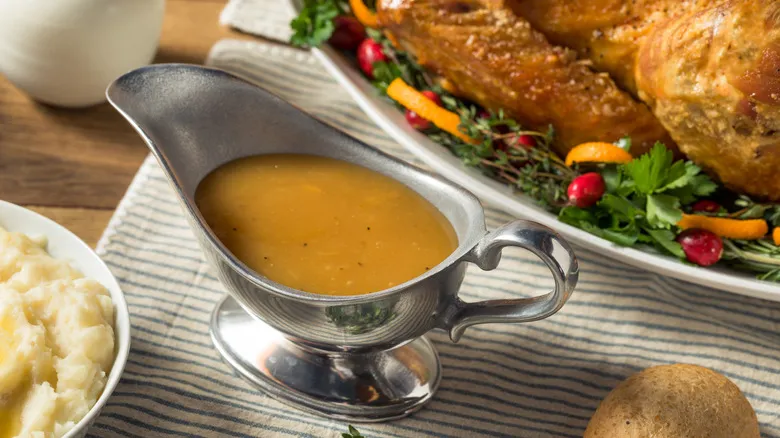
Deglazing Your Pan With Wine Leads To The Best Thanksgiving Gravy

Gordon Ramsay's Go-To Advice For Aspiring Chefs

5 Delicious Ways To Season Your Hot Dogs (And Why You Should)
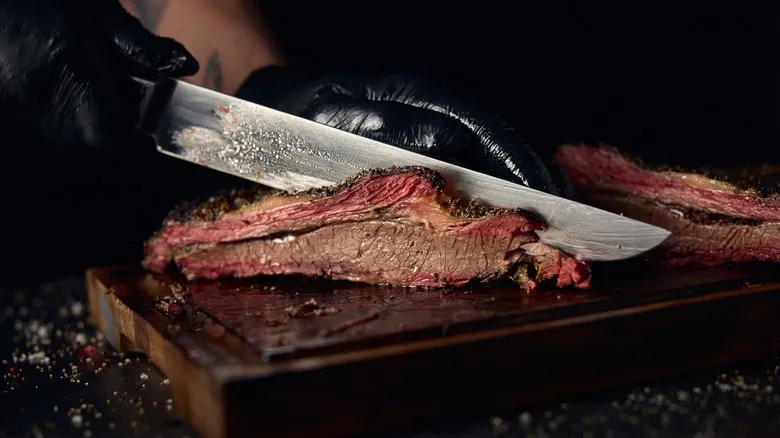
How Long Should You Cook Brisket? Follow This Expert Advice
Next up

